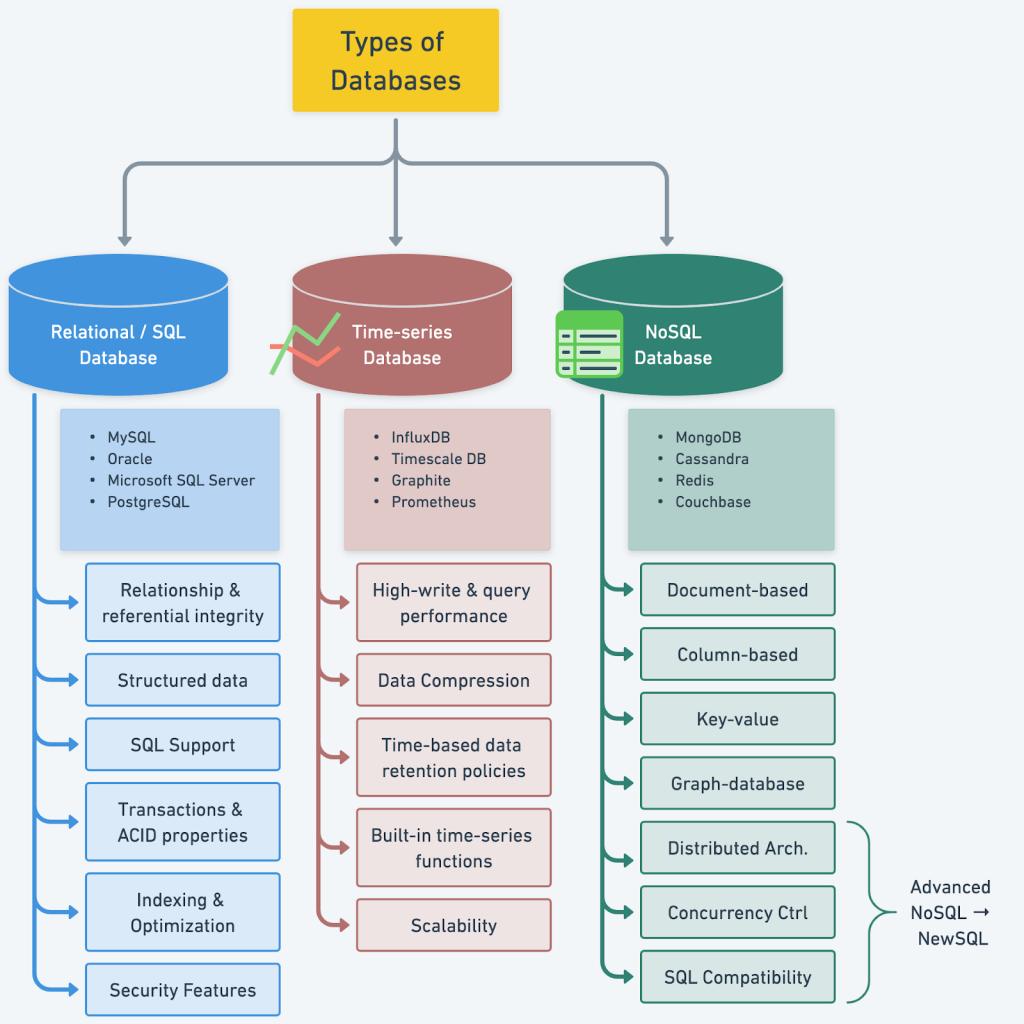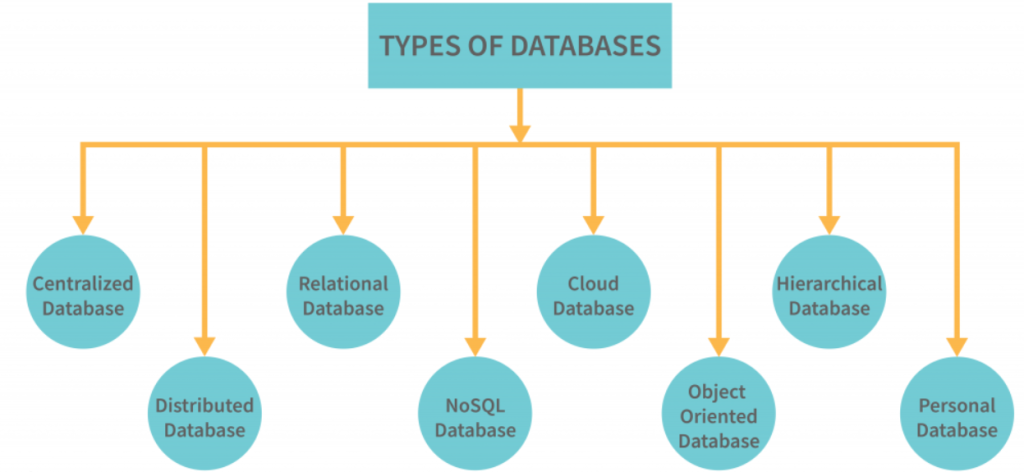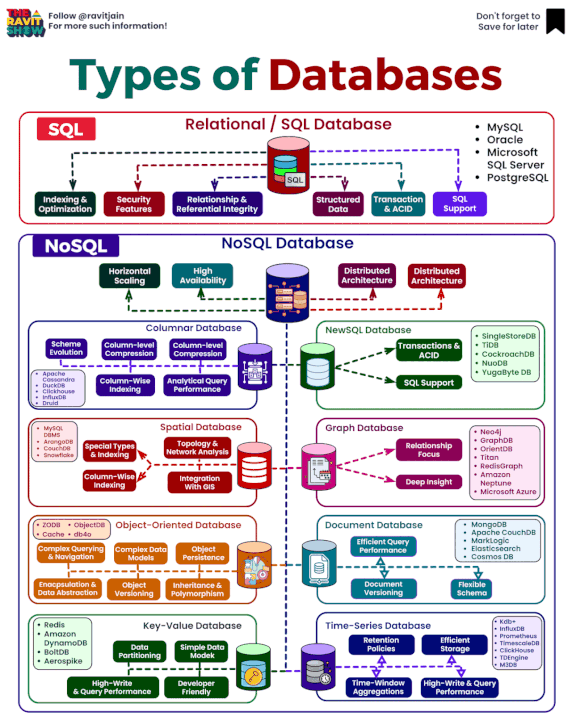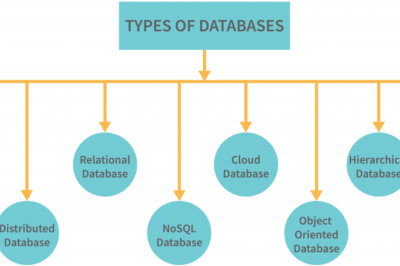
Here is a comprehensive list of the different types of databases along with their characteristics:
| Type of Database | Description | Example Technologies |
|---|---|---|
| Relational Database (RDBMS) | Uses a structured query language (SQL) for defining and manipulating data. Organizes data into tables with predefined relationships. | MySQL, PostgreSQL, Oracle Database, Microsoft SQL Server |
| NoSQL Database | Designed for specific data models and flexible schemas for building modern applications. Categories include document, key-value, wide-column, and graph databases. | MongoDB, Cassandra, Redis, Couchbase, Neo4j |
| Object-oriented Database (OODBMS) | Stores data in objects, similar to object-oriented programming. Suitable for applications requiring complex data representations. | db4o, ObjectDB |
| Distributed Database | A database in which data is stored across different physical locations. Can be either homogeneous or heterogeneous. | Apache Cassandra, Google Spanner, Amazon DynamoDB |
| Cloud Database | Database services that are built and accessed through a cloud platform. Provides scalability, flexibility, and managed services. | Amazon RDS, Google Cloud SQL, Microsoft Azure SQL Database |
| Graph Database | Uses graph structures with nodes, edges, and properties to represent and store data. Efficiently handles relationships and networks. | Neo4j, Amazon Neptune, OrientDB |
| Document-oriented Database | A type of NoSQL database that stores data as JSON-like documents. Provides flexibility and scalability for unstructured data. | MongoDB, CouchDB, ArangoDB |
| Time Series Database | Optimized for storing and querying time-stamped or time series data. Often used for monitoring, IoT, and real-time analytics. | InfluxDB, TimescaleDB, OpenTSDB |
| Hierarchical Database | Data is organized into a tree-like structure with parent/child relationships. Suitable for applications with a clear hierarchical relationship. | IBM Information Management System (IMS) |
| Network Database | A more flexible model than hierarchical databases, using a graph structure with many-to-many relationships. | Integrated Data Store (IDS), TurboIMAGE |
| Key-Value Database | A type of NoSQL database that uses a simple key-value pair mechanism to store data. Ideal for caching and real-time applications. | Redis, Riak, Amazon DynamoDB |
| Column-family Database | A type of NoSQL database that stores data in columns rather than rows. Efficient for read and write operations on large datasets. | Apache Cassandra, HBase, ScyllaDB |
| NewSQL Database | Combines the scalability of NoSQL with the ACID guarantees of traditional relational databases. Suitable for high-transaction environments. | CockroachDB, NuoDB, VoltDB |
| Spatial Database | Designed to store and query data related to objects in space. Used for geographic information systems (GIS) and location-based services. | PostGIS (extension for PostgreSQL), Oracle Spatial |
| XML Database | Designed to store, query, and manipulate XML documents. Facilitates data interchange and integration. | BaseX, eXist-db |
Additional Notes:
- Relational Databases (RDBMS): Excellent for structured data and complex queries.
- NoSQL Databases: Offers high performance, scalability, and flexibility for unstructured and semi-structured data.
- Object-oriented Databases (OODBMS): Integrates well with object-oriented programming languages.
- Distributed Databases: Ensures data availability and reliability across multiple locations.
- Cloud Databases: Provides ease of management and scalability without hardware maintenance.
- Graph Databases: Ideal for applications involving relationships and network graphs.


